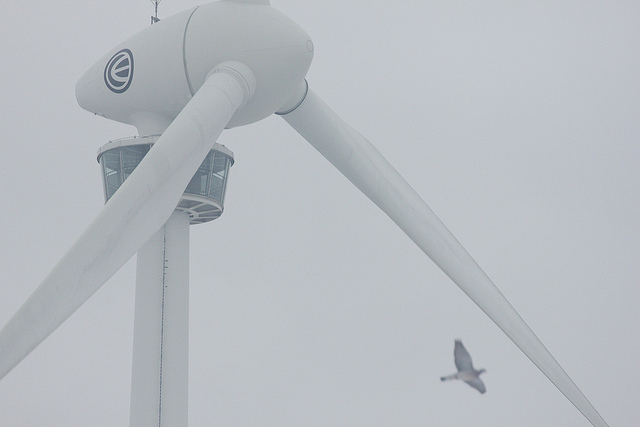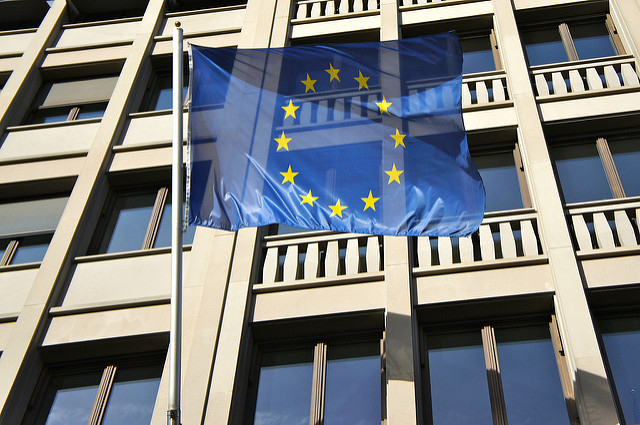Winning with Wind — Part III
By: Tuuli Martin
October 19, 2017

[In Part I and Part II of Winning with Wind, Virginia Tech Master of Natural Resources student Tuuli Martin introduced Germany’s Energiewende (the transition toward renewables) program, and the role of public opinion in the country’s shift to renewable energy. Next, Tuuli will examine criticism and resistance to wind power in Germany.]
Resistance to Wind Power
Despite strong public support for the energy transition, Germany’s Energiewende has been criticized for its high cost. Surcharges are added to electricity bills, placing the majority of the energy transition costs on consumers. German citizens experienced an increase of 50 percent in final energy prices between 2007 and 2017.1 Increases in household-level costs and exemptions given to certain industries are found to be disproportionate by some Germans.2 Loss in landscape aesthetic, noise emissions, and impacts on wildlife are some of the other reasons for public resistance.

Developing wind power presents a case of competing values. On the one hand, a strong support for cleaner energy exists among Germans. On the other hand, the visual and physical properties of wind turbines are perceived to threaten the quality of the environment. Wind turbines cause wildlife casualties, especially in migrating bat and bird populations.3
The development of wind energy therefore presents a challenge of aligning the energy transition with conservation objectives. Avoiding installations on migration routes and altering the operation of wind turbines according to bat and bird activity can mitigate impacts on wildlife.4 Comprehensive planning can also mitigate impacts on human well-being.
The noise of operating wind turbines and their light features have been the arguments for demanding increased installation distance from communities.5 Minimum distances to settlements are regulated by German legislation, but the Federal states can set additional restrictions if need be.6 In Germany and other densely populated countries, long minimum distances can result in substantial losses in wind energy potential. Analyses that account for both spatial and normative restrictions can be beneficial to estimate realistic gains from wind energy development. Communicating analysis results with the public can go a long way.

Minimum distances are an important policy instrument to make wind energy socially acceptable. However, the needs of the society should be satisfied in ways that does not significantly hinder utilizing wind potential. Scientific research has found that the impacts of wind farms are marginal when compared to fossil fuel plants.7 Opposition to wind energy development are better explained by physiological factors and limited knowledge. Closely involving the public in the associated spatial planning processes can alleviate residents’ opposition.
The efficiency of information sharing in general has an important role in achieving a steady transition progress. Wholesale energy prices have already dropped, but various levies and taxes have nulled the gain in households’ total expenditure on power.8 Until the energy transition brings an overall reduction in electricity bills, people must be ensured that renewables will deliver benefits in the long-term.
Integrating Wind Energy Into Existing Power Systems
Wind energy has great advantages over conventional energy systems. Wind turbines operate without producing CO2 emissions, the system is scalable and can be deployed quickly.9 Energy input from renewables is highly fluctuating, but Germany has been able to maintain a steady system. Germany’s power grid is among the most reliable in the world.10 Nevertheless, integrating new decentralized energy supply into existing network structures requires significant adaptions. The major challenge for an efficient market integration is establishing a network that is able to balance supply and demand.
Wind availability, speed, and predictability vary geographically. Location is the prime factor affecting the performance of wind energy systems.11 The most favorable conditions for wind- generated energy are located in the North and East part of Germany. In contrast, the most energy-intensive industries are located in the South.12 Adaptations to the existing power system are needed to deliver energy from high quality wind regimes to locations of high demand. Because decentralized management involves many system elements, their interaction must be harmonized by regional operators.

Regional grid operators play a role in balancing the input and output of power supply. Interference by grid operators cannot be avoided, but the associated cost can be lowered. One option is to invest in regional development to achieve self-sufficiency. Producing energy close to the consumer increases energy efficiency. Another option is to expand the transmission grid and distribution network to balance supply and demand in a larger area. Germany has made plans to opt for the latter. Power line projects have been listed in the Federal Requirement Plan Act and the Power Grid Expansion Act.13 However, only 700 kilometers had been built by 2016 because of local resistance.14
The matter of grid expansion is a subject of controversy. Promoters of grid expansion argue that it is practical to build north-to-south power lines given the wind potential and land availability in the north. Frequent interference by grid operators will continue to be required without an extensive network.15 Parties that oppose the construction of new power lines make a point of energy import from other countries.16 In order to not compromise emission reductions, energy trading in Southern Germany would be limited to neighbor countries that produce renewable energy. Until the debate is settled, Germany has had to cap renewable energy development.
Delays in grid expansion have required a revision of policies. Since the beginning of this year, additional onshore wind power has be limited to a certain capacity in certain regions.17 Capping support for new wind capacity in North Germany is expected to encourage development in other regions. Another change since the beginning of this year is replacing feed-in tariffs with competitive auctions.18 This change aims to increase wind power’s market exposure, lower energy prices, and control the annual added capacity.
It is important to note that the auction system applies for new large wind energy projects. It does not affect feed-in tariffs for community power and already existing contracts.19 Since Germany is a frontrunner of renewable energy transition, adapting to rapidly changing market conditions is to be expected. Specific requirements will be influenced by the relevant political and economic environment.

In the European Union context, the challenge of energy distribution might be easier to solve than in some other parts of the world.20 All members of the European Union are subject to uniform regulations and emission reduction targets.21 When all nations abide to the agreed objectives, energy supply and demand will be easier and cheaper to balance. Technology prices have already fallen worldwide.22 On the other hand, self-sufficiency may not become an issue in countries where wind potential is greater. Regardless of the country-specific conditions, utilizing renewable energy will require adequate network capacity.
Integrating renewable energy is likely to necessitate changes to the existing power system. Sufficient grid connections are needed to distribute energy according to the demand. Balancing generation capacities regionally is likely to become less complicated as more nations move forward with their emission reduction plans. The rate of renewable energy deployment will influence the importance of conventional power sources.

[In Part IV, the final installment of Winning with Wind, Virginia Tech Master of Natural Resources student Tuuli Martin discusses the impact of shifting to renewable energy on fossil fuels, as well future challenges — watch for it October 26!].
[Creative Commons License photo from Flickr courtesy of: Windwärts Energie, Mike Ricard, Isriya Paireepairit, Renewables Grid Initiative, and Yukiko Matsuoka.]
1. Agora Energiewende. The Energiewende in a nutshell. Berlin: Agora Energiewende, 2017.
2. “Energiewende: Relieving retail sector and consumers,” Clean Energy Wire, October 2016.
3. Christian C. Voigt, Linn S. Lehnert, Gunars Petersons, Frank Adorf and Lothar Bach, “Wildlife and renewable energy: German politics cross migratory bats,” European Journal of Wildlife Research 61 (2015): 213-219.
4. Ibid.
5. Markus Leibenath, Peter Wirth and Gerd Lintz, “Just a talking shop?—Informal participatory spatial planning for implementing state wind energy targets in Germany,” Utilities Policy 41 (2016):206-213.
6. Frank Masurowski, Martin Drechsler and Karin Frank, “A spatially explicit assessment of the wind energy potential in response to an increased distance between wind turbines and settlements in Germany,” Energy Policy 97 (2016): 343-350.
7. Benjamin Wehrmann, “Fighting windmills: When growth hits resistance,” Clean Energy Wire, June 12, 2017.
8. Agora Energiewende. The Energiewende in a nutshell.
9. Global Wind Energy Council. The Global Wind Energy Outlook 2016. Brussels: Global Wind Energy Council.
10. Sören Amelang and Jakob Schlandt, “Germany’s electricity grid stable amid energy transition,” Clean Energy Wire, October 20, 2016.
11. Juliana S. Lacerda and Jeroen C.J.M. van der Bergh, “Mismatch of wind power capacity and generation: causing factors, GHG emissions and potential policy responses,” Journal of Cleaner Production 128 (2016): 178-189.
12. Kerstine Appunn, “Connecting up the Energiewende,“ Clean Energy Wire, January 26, 2015.
13. Agora Energiewende. The Energiewende in a nutshell.
14. Ibid.
15. Ibid.
16. Agora Energiewende. The Energiewende in a nutshell; and Thomas Unnerstall, The German Energy Transition(Berlin: Springer, 2017).
17. Lacerda and van der Bergh, “Mismatch of wind power capacity and generation: causing factors, GHG emissions and potential policy responses.”
18. Appunn, “Connecting up the Energiewende.“
19. Agora Energiewende. The Energiewende in a nutshell.
20. Germany is one of the founding members of the European Union. As of August 2017, a total of 28 European countries have joined the European Union. “About the EU,” European Union.
21. “EU climate action,” European Commission.
22. Global Wind Energy Council. The Global Wind Energy Outlook 2016.


